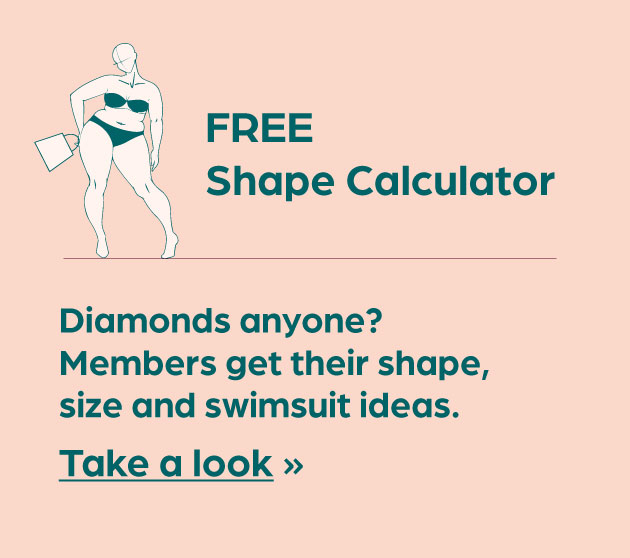Many of us don't know we have poor bone health, because poor bone health is silent and it's often not realised until we fracture. Exacerbated by a lack of early detection.
There is a huge gap in women's bone health in our Australian health system (and it seems in other countries too). A gap that ensures we have a very small window to optimise our bone health and significantly reduce the likelihood of fracture as we age. A gap that will force our hand for medications first rather than give us the chance to avoid them.
I'm not saying don't have the medication, it absolutely has its place. What I am saying is if you can possibly avoid it, or delay taking it until much later in life (if at all) why wouldn't you? Because no medication comes without risk.
"More fractures occur in patients with Osteopenia than Osteoporosis." (World Health Organisation) Or putting it another way, most fractures occur in people with osteopenia, whose bone density is low, but not low enough to qualify for an osteoporosis diagnosis.
When we think of Bone Health most of us will think Osteoporosis. Arthritis and cancer may also enter our thoughts. According to Healthy Bones Australia, about 67% of the Australian population aged 50 years and older (women and men) have osteoporosis or osteopenia - poor bone health. That's over 2 out of 3 of us over 50. Is that you? It's me.
When bones become weaker and less dense, the bone has an increased risk of breaking. This is osteoporosis. Osteopenia is when you have lower than normal bone mineral density, but not as low as osteoporosis. Bone mineral density is one of the ways in which bone health is measured and understood. More on that in future editions.
How often does your bone health come up in conversations with your doctor, your health team? Do you know the status of your bone health?
BACK TO THE STATS
In the 'Osteoporosis and fractures in Australia. A burden of disease analysis 2023-2033' report presented to parliament in 2023 by Healthy Bones Australia, of the 67% of people in Australia with poor bone health, women account for 37% so we make up the majority. Here's how that 37% breaks down by age:
- Women aged 50-69 = 4% osteoporotic & 16% osteopenic = 20%
- Women aged 70+ = 8% osteoporotic & 9% osteopenic = 17%
Hold on to your chair...those numbers are estimated to increase 23% by 2033.
The total cost of osteopenia and osteoporosis equated to $4.8 billion (2023) and is estimated to climb to $8.3 billion per year (by 2033) representing a significant 103% increase in annual cost. The total estimated cost over the next 10 years is estimated to be $72 billion.
Furthermore, "The risk of fracture in the population 50 years and older is underestimated or underprioritised, hence a significant gap in osteoporosis (bone active) treatment."
Here's why. And why you as your own health advocate need to have your bone health on your radar.
THE BONE HEALTH GAP FOR WOMEN
This gaping hole in our health care system is wider for women because of the M word - Menopause and the impacts that has on our bone health awareness and treatment.
AND
It's not until we're 70 years old that a bone scan (DEXA) is available through Medicare, which is often when many of us will have our first one. When we're 70!
It's crazy!
That's where the 'furthermore' comment above becomes real. If bone health is a silent condition and we're not screening most people until they are 70, those 50-69 (and earlier) stats are likely to be rather conservative.
Our health system is not set up for prevention. That's why there is a significant bone health gap. A gap you need to fill by being your own health advocate - your own bone health advocate.
If you leave it until you're 70 to get your first bone scan, the time you have to pro-actively manage your bone health and prevent fractures occurring is significantly reduced. Why wait until you have a fracture to find out?!
ABOUT OUR BONES
I'm a big believer in 'if you know how something works, you are more likely to understand it and care about it.' So here are some bone basics for you.
If there is one thing I want you to know and remember about your bones, is that they are living things. Bones may be hard but they're living. They have a blood supply and nerve supply. They also have hormone receptors too.
They're also constantly remodeling. You know this. You break a bone, it heals. Not as quickly as they did when you were a kid, but they do heal.
That's why it's important we keep caring for our bones as we age, because we can influence them...because they are living tissue.
Let's take a closer look.
Bones play an important role in our body beyond just holding us up in support. They also provide protection of vital organs, an environment for marrow (where blood cells are produced) and act as a storage area for minerals (such as calcium). (source: International Osteoporosis Foundation).
At The Macro Level:
We have about 206 bones in our body's skeleton of varying length, size and shape. There are 3 types of bone tissue that make up our body's skeleton:
- Compact (Cortical) tissue. This is the harder, outer 'shell' of bones.
- Cancellous tissue. Also known as Trabecular bone. This is the sponge-like tissue inside bones.
- Subchondral tissue. This is the smooth tissue at the ends of bones, which is covered with another type of tissue called cartilage. Cartilage is a specialized, rubbery connective tissue.
The tough, thin outer membrane covering the bones is called the periosteum. Under the hard outer shell of the periosteum are tunnels and canals. Through these, blood and lymphatic vessels carry nourishment for the bone. Muscles, ligaments, and tendons may attach to the periosteum.
Bones give shape and support for the body. They give protection to some organs. Bone also serves as a storage site for minerals. And soft bone marrow in the center of certain bones is where blood cells are formed and stored. (Source: John Hopkins Medical)
At The Micro Level:
This is where it gets super interesting and where we begin to understand what we can do to help our bones thrive.
At the microscopic level bone consists of cells, matrix, and minerals. At the nanometer level (ultra-microscopic), is where the individual crystals and collagen fibrils are. Here is a link to a great diagram that shows all that (source: Aging & Bone).
Bone Cells & Remodeling:
Remodeling is a term you will come across often if you are reading about bones and talking about them with your health team. It's a really important concept to appreciate about our amazing bones. Our living bones will lay down new bone and take away old bone in the highly complex process of remodeling.
For both males and females, up until the age of about 25, we replace more than is broken down which means our bone mass increases. From about 25-50 this process is stable - breakdown and replacement is equal. From 50+ we don't replace more than we lose. And in the menopause transition that's accelerated. Women can lose 10-20% of bone mass in those menopause transition years. That's where our biggest drop in bone health occurs. From there we continue to lose bone mass but at a reduced rate until we're about 70. Then it can increase again.
Osteoblasts are bone cells that 'build' new bone tissue while the Osteoclasts (also bone cells) break down (resorb) old bone tissue to make room for the healthier new tissue to replace it.
Osteoblasts lay down collagen and mineral deposits, vital for maintaining bone mineral density and strength. (Source: The International Osteoporosis Foundation). Thyroid-stimulating hormone (TSH), thyroxine (T4), and triiodothyronine (T3) stimulate osteoblastic activity. (Source: Aging & Bone).
Osteoclasts in particular are influenced directly or indirectly by hormonal signals. This interaction between bone remodeling cells and hormones creates the opportunity for a multitude of pathophysiological consequences. (Physiology, Bone Remodeling by Paul Rowe, Adam Koller, Sandeep Sharma).
I like to think of the remodeling process is rather like painting a wall. To ensure the paint stays and sticks well to the wall we prepare it - we sand it back a bit and lay on a primer. That's what the Osteoclasts do. They're the prep. The Osteoblasts are the new paint - the final coat that protects the walls and makes them look as good as new!
Hormones & Bones:
The hormones involved in bone remodeling include the "parathyroid hormone, growth hormone, estrogens, calcitriol and paracrine signals (insulin-like growth factor I-IGF-I, transforming growth factor-β-TGF-β, prostaglandin E2-PG-E2, nitric oxide-NO, interleukin-1-IL-1, interleukin-6-IL-6, Tumour necrosis factor-α-TNF-α) (Fernández-Tresguerres-Hernández-Gil et al., 2006).
"The rate of bone turnover is due to the effect of T3 and T4 on the number and activity level of osteoblasts and osteoclasts." (source: Aging & Bone) These are thyroid hormones.
A lot of detail I know but you don't need to remember it all. I've listed them so you get a sense of the influence hormones have on bone. This is important for when we talk about menopause and other risk factors of bone health as we age in another blog posts in the Bone Health Series (scroll the Blog to find them - they're not very far away:)).
Osteocytes are mature bone cells found in calcified bone that regulate the formation of new bone and the resorption of old bone - directing the bone remodeling process. They are essentially old osteoblasts. Osteocytes represent 90–95% of all bone cells in the adult skeleton. In human bone, they have a long life (up to 25 years).
They regulate fluid flow within the bone via cellular signals that occur when mechanical force is applied to bone (ie loading and movement). So clever. They're also responsible for the mineral balance within our body too - mineral homeostasis.
Bones do a lot. They are highly dynamic living tissue that influence and involve many processes, responsible for more than just forming our skeleton and holding us up.
Q: What have you learned about bones that has caught your attention?
A: For me, it was the hormonal impacts on bone.
FINAL THOUGHTS
Sit back and take in those stats about the number of us living with poor bone health now and the number of us projected to live with it in less than 10 years from now. With an aging population that is a big burden on our health system.
With the gaps we currently have in that health system, the onus is on us to fill it. To be our own Bone Health Advocate. To ind out where our bone health is at and nurture our bones for the quality of life we want to enjoy in the future.
Understanding some of the intricacies, the building blocks of our bones is fundamental to appreciating how to look after them as we age. I hope you will take this in and from time to time refer back to it for when you're having discussions with your health team about treatment and care. It might just help to frame your questions and support your bone health knowledge going forward.
Remember the contents of this are meant for education purposes only. This newsletter is here to spark thoughts and conversations not to give advice. Conversation not consultation. I'm not a doctor or a qualified health professional offering advice. That's on you to glean from your health team and determine what's best for you.
Anita xx
p.s. Scroll to look out for other blog posts in my Bone Health Series. They're near by so it won't take long to find them :)
===========
OTHER WAYS TO CATCH ANITA:
Podcast: Midlife Unfiltered - The Season of Me.
- Watch and listen to it on Substack (you don't have to have an account to do so. But if you want to know when we post new stuff, subscribe while you're there!). We're also on YouTube. or
- Listen to it where ever your like to listen to your podcasts.
Subscribe to my weekly newsletter Midlife Mojo
I hand curate Midlife Mojo for you with love. Finding recent research on topics that help to step into and through midlife with power. To bring awareness and encourage you to be your own health advocate and ask the questions of your health team to get the outcomes that intuitively you know are the right ones for you. Subscribe here.



